Encountering Loss in Growing Like a Tree: Sent a Letter
How does one introduce loss into the two-dimensional space of the image? Growing Like a Tree was first initiated as a curatorial project by photographer Sohrab Hura at the Ishara Art Foundation, Dubai in 2021. In the latter part of the year, the second iteration also took place there, titled Growing Like a Tree: Static in the Air, gesturing to listening as a practice of resonance where connections are drawn between image-making practices.
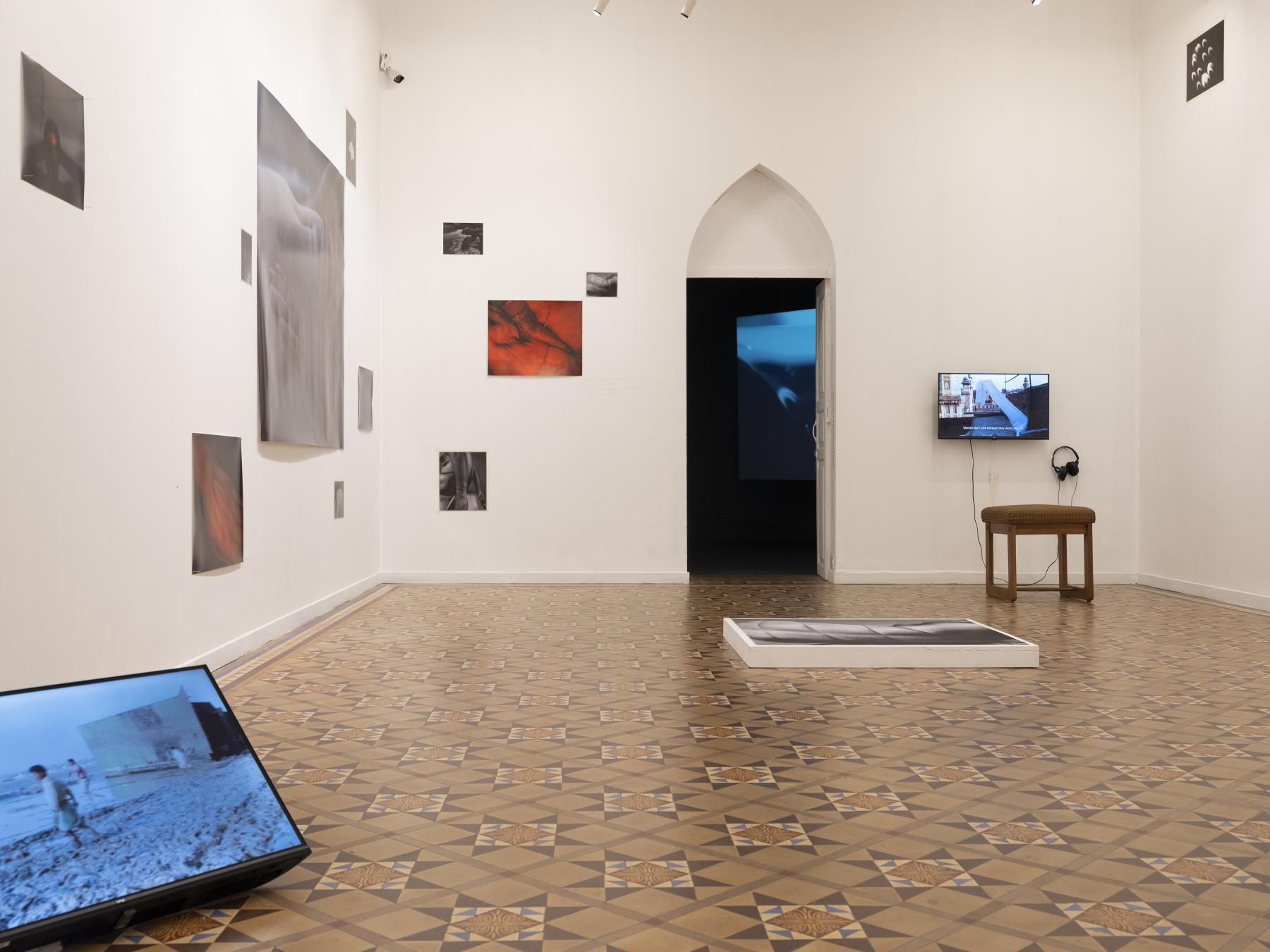
Installation view of Growing Like a Tree: Sent a Letter at the Sunaparanta Goa Centre for the Arts. 2022.
The third iteration, currently on display at the Sunaparanta Goa Centre for the Arts, begins with an invitation in the form of a fossilised edition of Sent a Letter (2008) by Dayanita Singh to the curators Bunu Dhungana and Sadia Marium Rupa. The exhibition highlights aesthetic, temporal, and political interconnectedness within contemporary photography, building on the curatorial prompt of image-making practices that seemingly take shape with a networked relationality and shared language, across South Asia and beyond.
What is striking about the exhibition is the several delineations of loss that the images attempt to fill. In the technical accounting for and often during the translation of analogue to digital images, the loss of pixel value accounts for the compression of the image, reflected in methods such as scanning, image transfer and fidelity to the image-rendering apparatus. Through a selected cluster of works, this essay attempts to centre the theme of loss as it appears within the image through the compression of experience into frames.
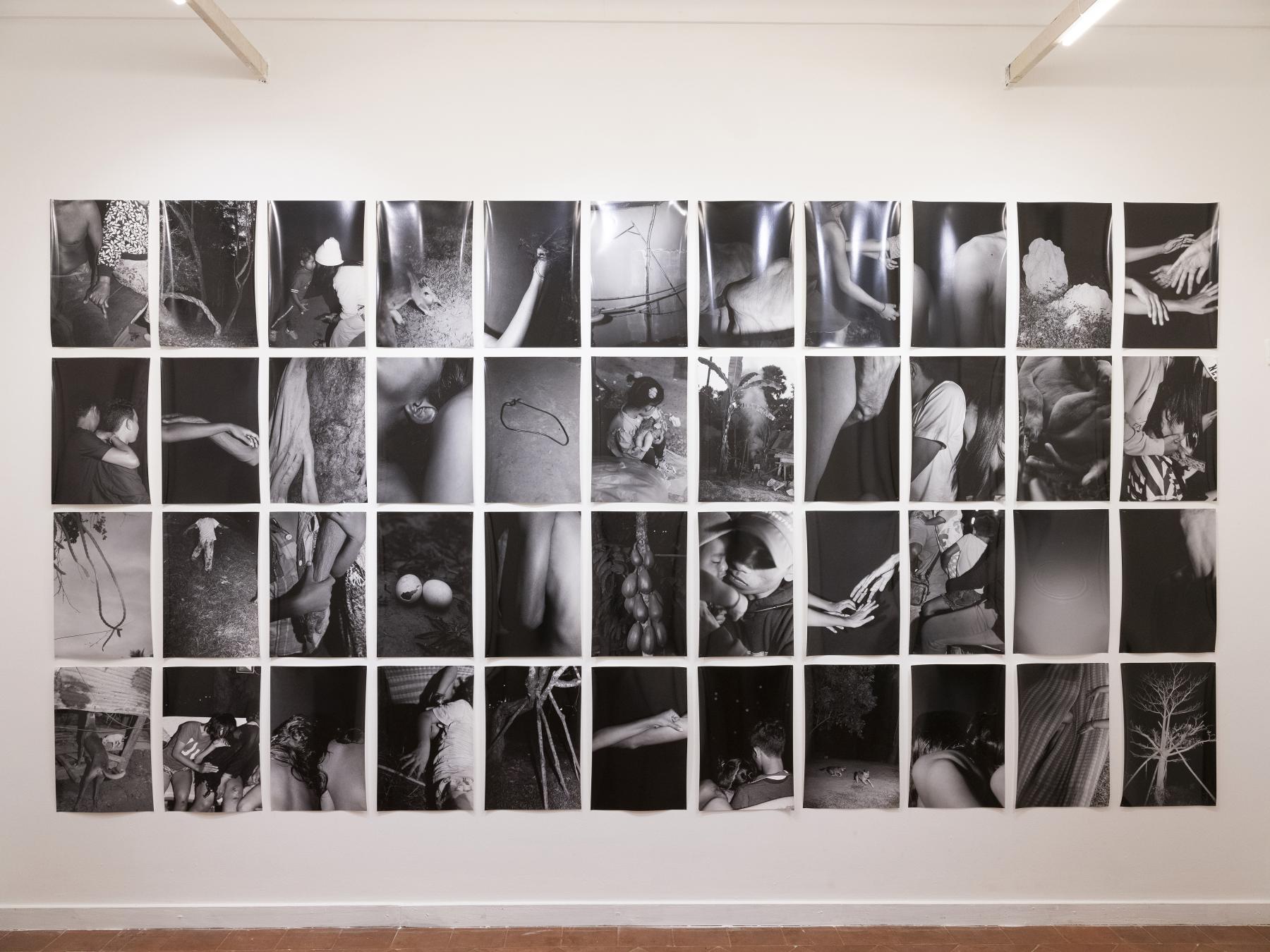
Installation view of Surge (2019) by Priyadarshini Ravichandran at the Sunaparanta Goa Centre for the Arts. 2022.
Surge (2019) by documentary photographer Priyadarshini Ravichandran is a series of photographs exploring themes of connection and loss, referencing her own relationship with her brother that has lost its sense of intimacy over the years. There is a sense of movement towards and away from contact in the photographs on display, as we see images of interlocking hands, moments of encounter between bodies, and closeness through affectionate gestures. Hands are repeatedly photographed, with the sensoriality of touch acting as the very instance of connection. Familiarity is a chasm that the hand tries to cross, as a lone electrical wire appears out of the ground seeking a connection. The photographs are framed with a certain intimacy—the bodies don’t appear in their entirety but through moments of proto-contact.
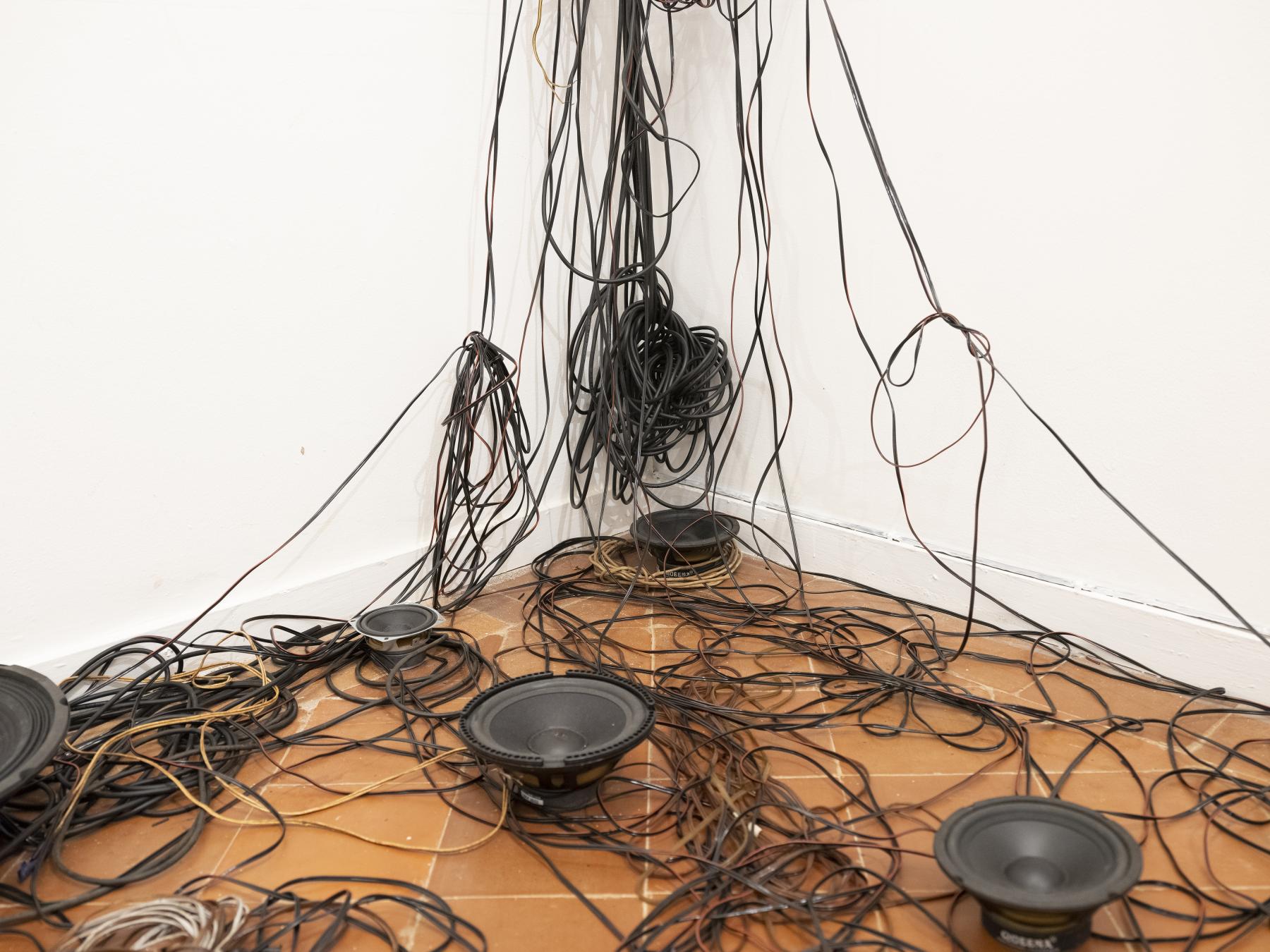
Installation view of Adventitious (2022) by Farah Mulla at the Sunaparanta Goa Centre for the Arts. 2022.
Farah Mulla’s installation, Adventitious (2022), takes the form of a mesh of wires that descend from the top corner of the exhibition room and connect to exposed speakers scattered along another corner; the connected and disconnected tangle of wires resemble the roots of a tree. Sounds of static alternate between multiple speakers, with breaks in sound occurring as often as sonic utterances, which are never quite readable. While Mulla’s work can be fundamentally seen as a sonic interruption, one can argue that the visual nature of the organised output of the installation creates an audio-visual projection. The produced sound is exaggerated by the exposed interface, and produces a loss of fidelity signalled by the disruption of connection.
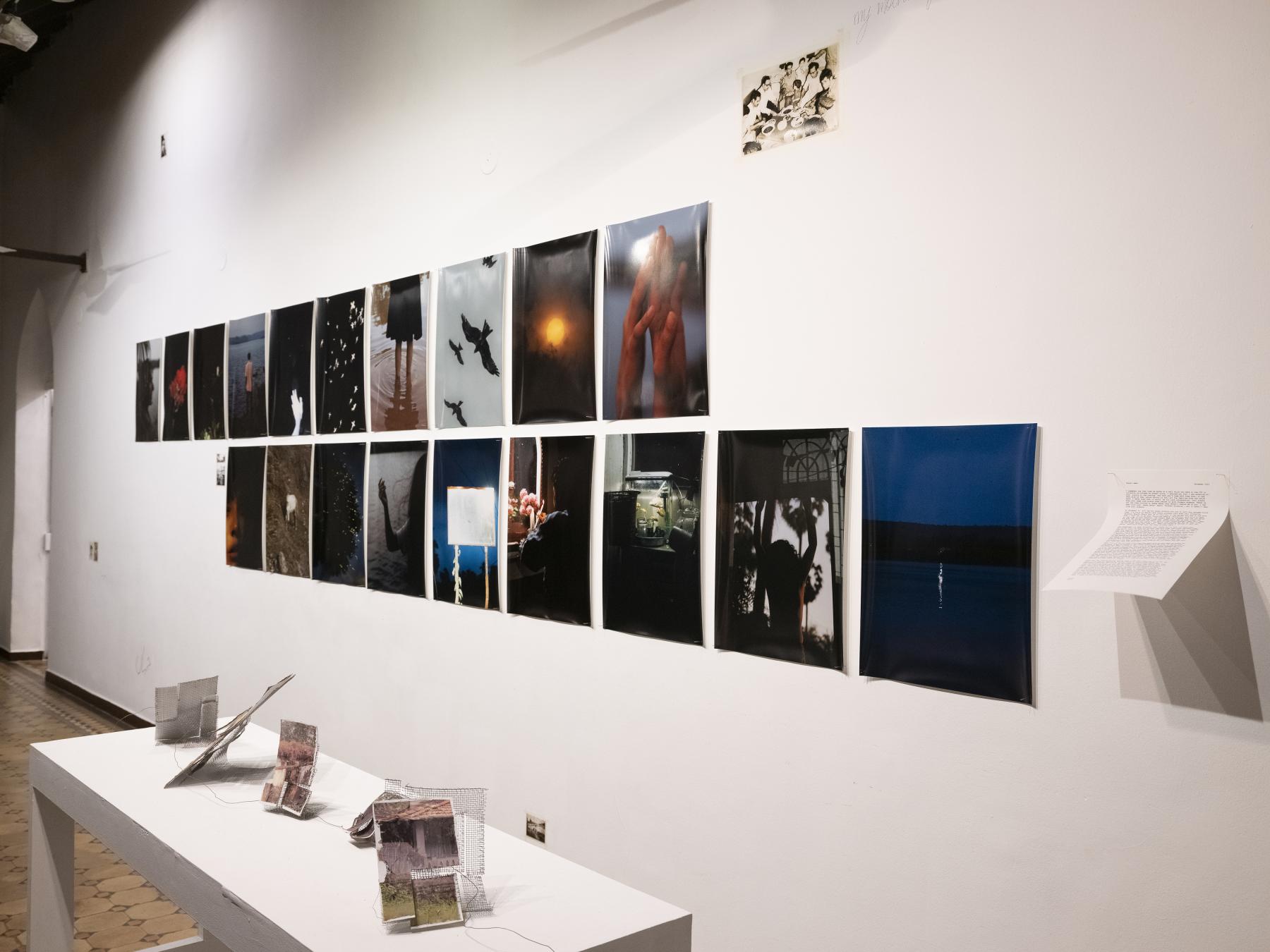
Installation view of Once Was Home (2018) by Ipshita Maitra and Jahan (2022) by Ali Monis Naqvi at the Sunaparanta Goa Centre for the Arts. 2022.
Ali Monis Naqvi presents the search for a sense of home or an ideal place in Jahan (2022), even as it ceases to exist. Naqvi’s own losses inform the series of images, from the demise of his grandmother to the demolition of familiar structures in his neighbourhood Chamanganj in Kanpur, Uttar Pradesh. Familiarity and resemblance lurk in the midst of this darkness, with the artist sometimes encountering a new home while traversing increasingly unfamiliar environments. The series of photographs come to life as flashes of recognition, instantaneous in effect, in an attempt to grasp and hold onto the image.
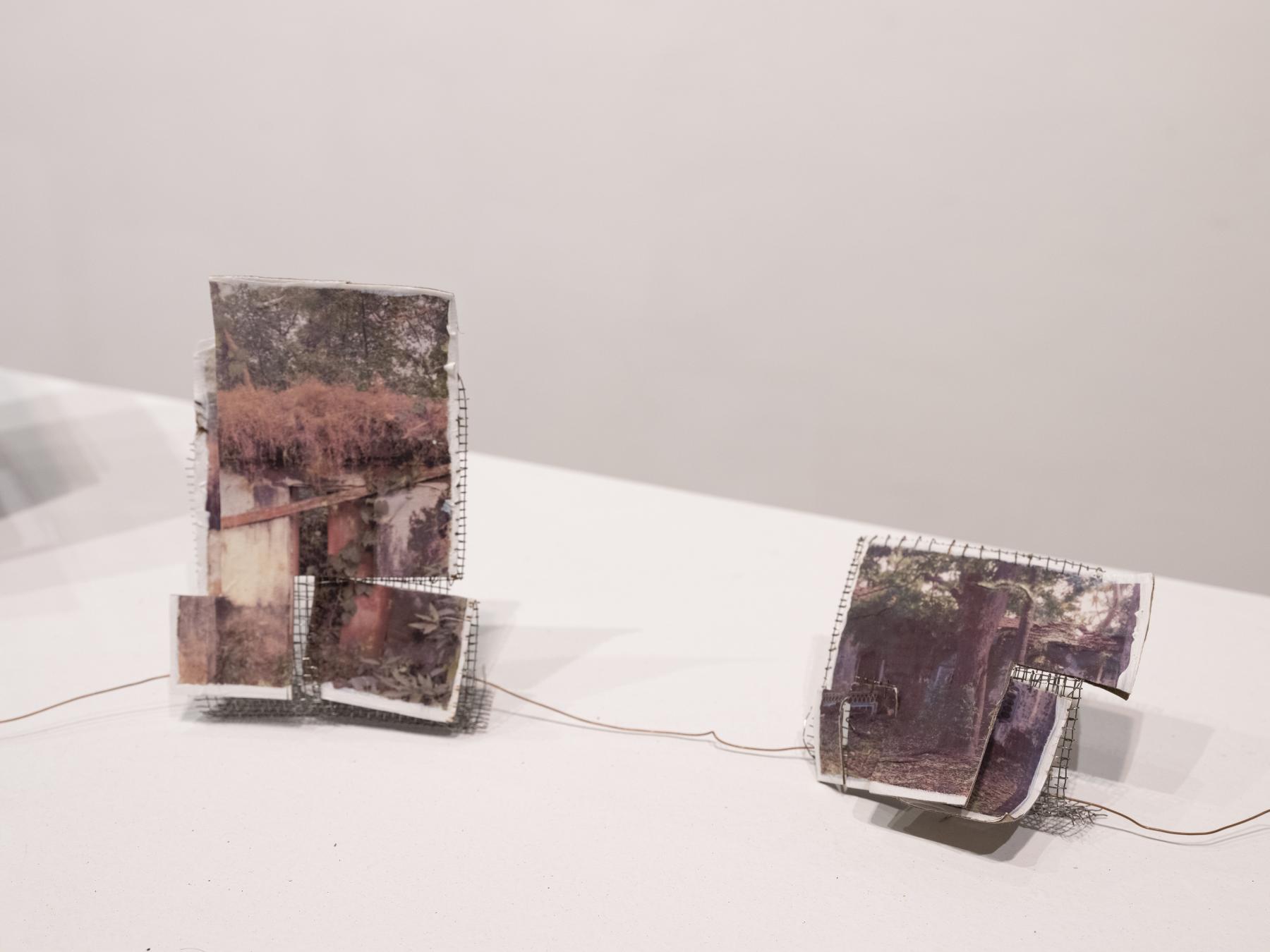
Once Was Home (2018) by Ipshita Maitra at the Sunaparanta Goa Centre for the Arts. 2022.
The sculpture Once Was Home (2018) by Ipshita Maitra is composed of a set of photographs documenting razed buildings in Goa, strung together on dismembered meshes. The houses themselves are also seemingly dismembered, a comment on the changing landscape of Maitra’s familiar memories. The effect of the photo emulsion, transference of image on paper makes the memories appear fragile as they are leeched of colour and the houses appear superimposed, decrepit and empty.
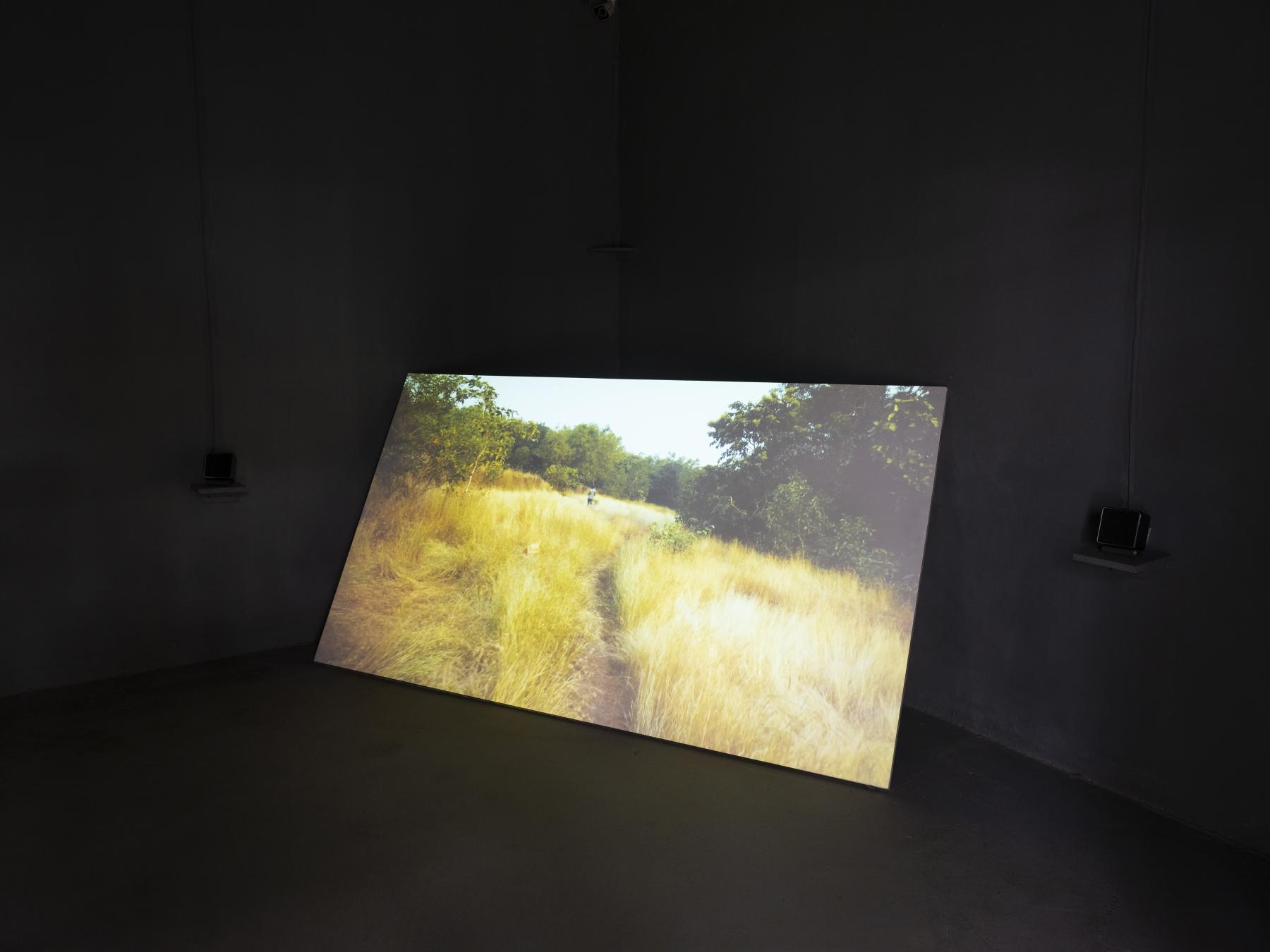
Golden Jubilee (2021) by Suneil Sanzgiri at the Sunaparanta Goa Centre for the Arts. 2022.
Suneil Sanzgiri’s short film Golden Jubilee (2021) looks at Goa as a territory through the lens of colonialism, from the Portuguese occupation to the union territory’s integration into the Indian Republic, and contemporary environmentally extractive policies. The film asks a series of questions surrounding loss, with re-appropriation and extraction of land as its focal point—how difficult is it to leave one’s land? What is a colonial feeling? When we analyse images of the past, are we mining the archive? The film is constructed using archival interviews, news broadcasts, and a photogrammetric map of the artist’s ancestral home in Goa along with footage of contemporary mining activities spanning the colonial and “post”-colonial. The photogrammetric map is of an old Goan house where the artist’s ancestor, Shailu Sanzgiri, arrived almost hundred years ago, after moving to Mangeshi from Cortalim following religious persecution by the Portuguese colonisers. The prologue begins with the photogrammetry model of the house being navigated on a laptop screen, where the user’s hands are visible, immediately establishing a separation between render and reality. Subsequently, the image shifts to the first-person view of a 3D modelled man entering the patchy, fraying old house.
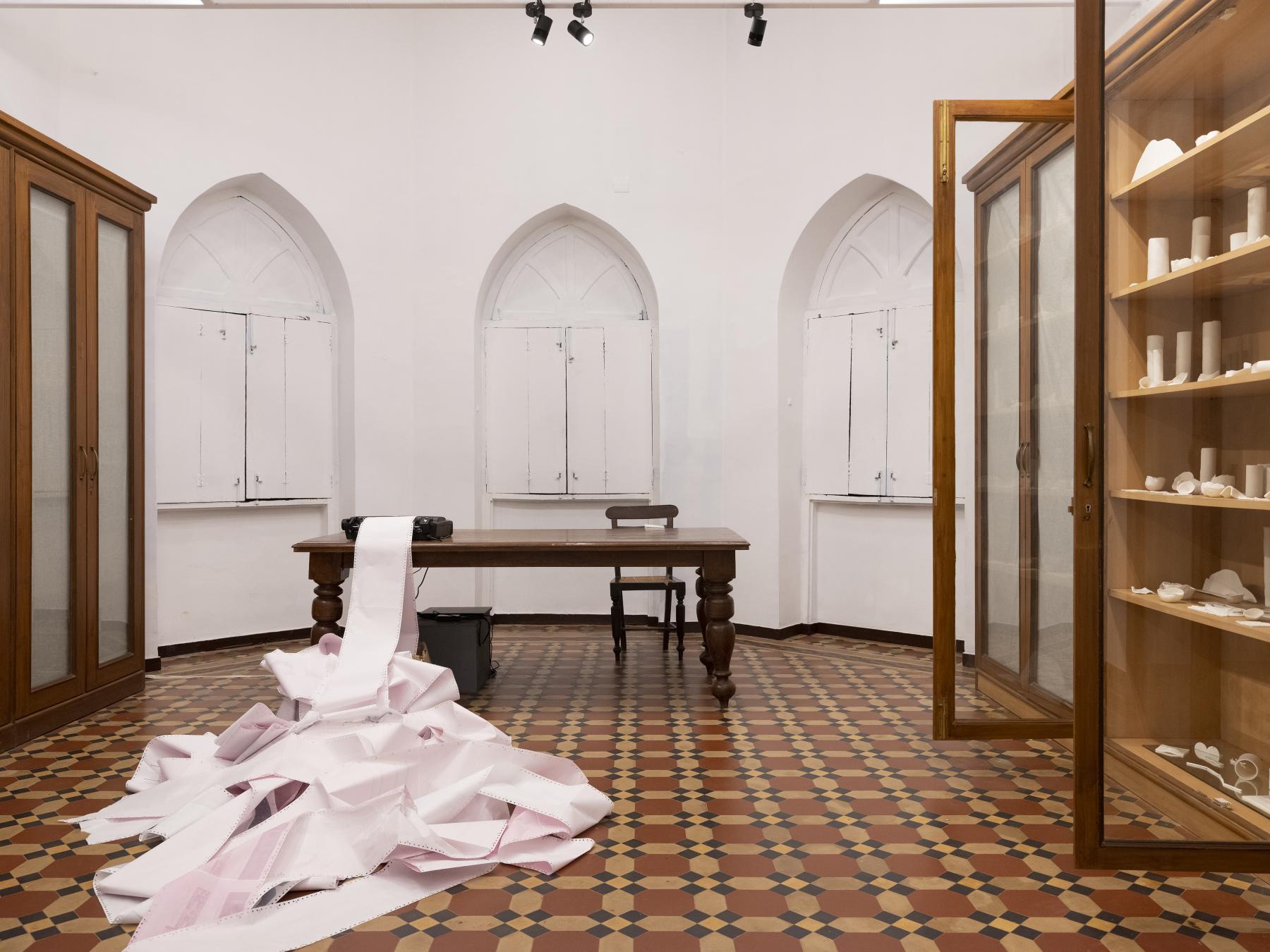
The heavy weight of tiny little things (2021) by The Packet at the Sunaparanta Goa Centre for the Arts. 2022.
The function of loss within images of the photogrammetry model of the house is exacerbated by the transfer loss through the image rendering. In this instance, loss takes on an extractive quality, running parallel to the preoccupation with land and mining of the archive. Loss is always temporal, never static; we see fissures present, captured, manipulated and held in the image form, through the works discussed. The mined presence of loss acts against the grain, generating new connections that rethink the image.
To read more about other projects by artists mentioned here, click here, here and here.
All images by Sohrab Hura, courtesy of the artist.




